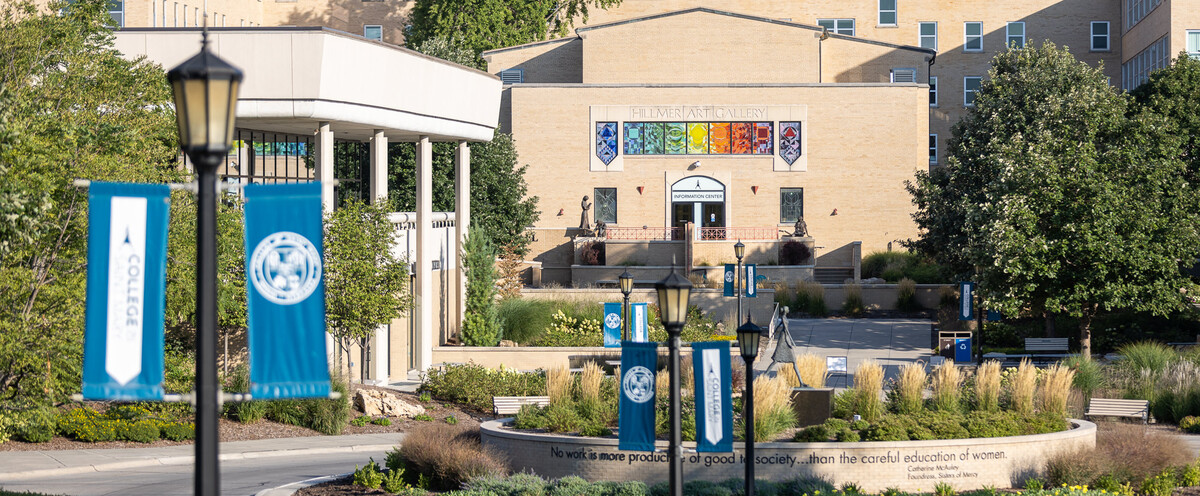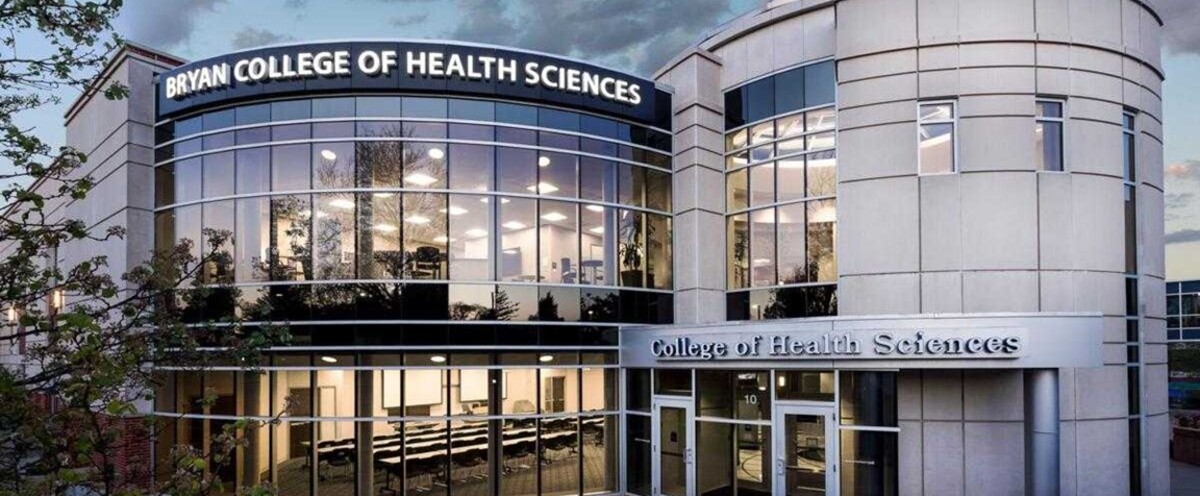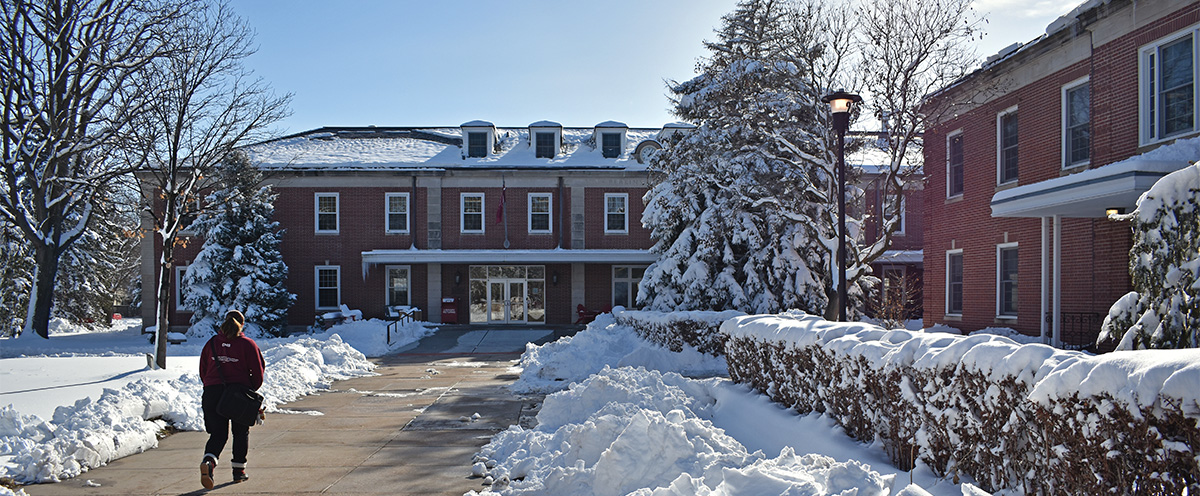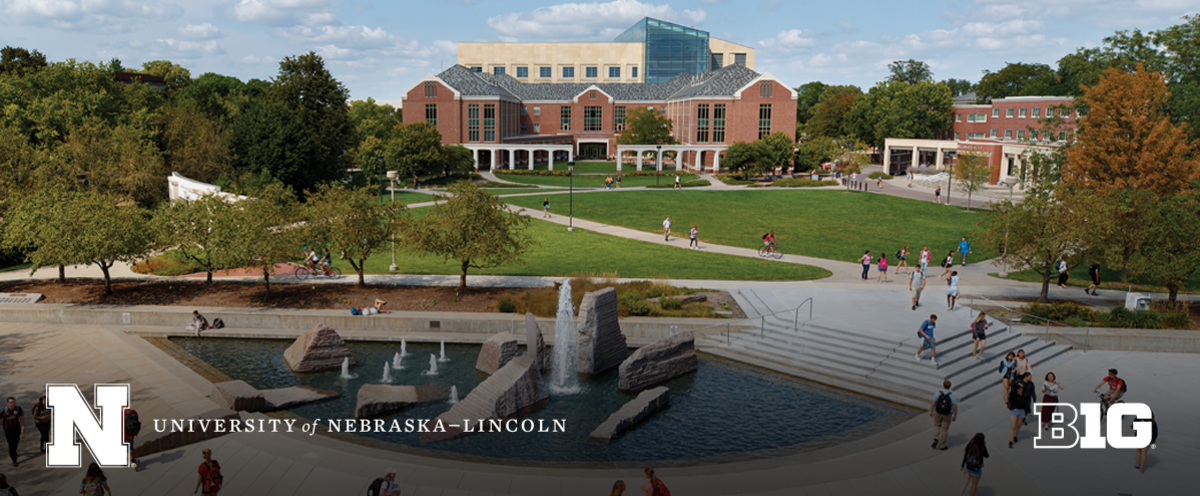2003 March
March 17, 2005
FROM THE
PRESIDENT
by Vicki Kucera
 It is with mixed emotions that
I write this final 'letter from the president'. It's been an
incredibly busy year and part of me is glad that will soon come to
an end. But there is another part of me that has enjoyed this past
year and the wonderful people I've worked so closely with so much
that it will be hard to pass that gavel in a couple of months. But
pass it I shall.
It is with mixed emotions that
I write this final 'letter from the president'. It's been an
incredibly busy year and part of me is glad that will soon come to
an end. But there is another part of me that has enjoyed this past
year and the wonderful people I've worked so closely with so much
that it will be hard to pass that gavel in a couple of months. But
pass it I shall.
Thanks to everybody who contributed to another successful Countdown To College. Mary Sommers and Les Monroe did a fantastic job representing the Association (as usual). Thanks especially to EducationQuest for sponsoring this incredible annual event.
We had a very busy Board meeting on January 24th. I've been blessed with committees this past year that have poured their heart and soul into their work. Choosing a 'Committee of the Year' for the spring conference awards banquet will be no easy task!
Speaking of the spring conference, mark your calendars for a good time in Grand Island April 9-11. The Board has been tackling some touchy issues that we want to share with you at the business meeting, so please be ready for discussion. No doubt the PDC is putting together a fine agenda for the conference, but frankly I look forward to the camaraderie more than anything. Can't wait to see you all there!
Thanks for a wonderful year everybody. Deana Unger and the new Board are going to do a great job for the Association, and I look forward to serving with them as Past-President.
See you in
GI!

| Index: | |
| COUNTDOWN TO COLLEGE" AIRED DECEMBER
11 NEW NASFAA REVIEW FOR NCAA DIVISION I SCHOOLS 2003 STUDY TO EXAMINE FINANCIAL AID FOR GRADUATE AND PROFESSIONAL STUDENTS |
"COUNTDOWN TO COLLEGE" AIRED DECEMBER 11
Nebraska students and parents received answers to their college planning questions during "Countdown to College," a one-hour television special on Wednesday, December 11 on the Nebraska ETV Network. Students and parents phoned in questions during the live program. Experts in the areas of admissions, financial aid, and student services answered questions about how to plan and pay for college and how to make a successful transition from high school to higher education.
Hosted by NET's Mike Tobias, the 2002 "Countdown to College" panel included Mary Sommers, director of financial aid at University of Nebraska-Kearney; Kaye Bartels-Eiland, admission representative at Southeast Community College, Lincoln campus; Les Monroe, director of the Lincoln College Planning Office of EducationQuest Foundation, Hans Julius, a junior at Midland Lutheran College; and Mariah Carroll a junior, at the University of Nebraska, Lincoln campus.
Behind the scenes, eleven NeASFAA volunteers answered over nearly 73 calls and e-mails on the spot! For the third year in a row, Jan Going and Vicki Kucera volunteered behind the scenes. They have been answering phones for the show every year that NeASFAA has volunteered! Other NeASFAA volunteers included Erin Haynes, Joan Jurek, Sara Smith, Sarah Sell, Randy Sell, Amy Dober, Shirley Huttenmaier, Danni Warrick, and Deb Lowry. Special thanks to Don Vos, Concordia University director of admission for answering the admissions questions.
"Countdown to College" is a collaborative project of NET and EducationQuest Foundation, a not-for-profit foundation whose mission is to provide access to higher education to all Nebraskans.
NEW NASFAA REVIEW FOR NCAA DIVISION I SCHOOLS
Washington, D.C. (January 31, 2002) – In February 2003, the National Association of Student Financial Aid Administrators (NASFAA) will begin offering a new financial aid review program for schools that compete in NCAA Division I sports. Although violations of NCAA by-laws usually originate in the athletic department, serious infringements can occur in other campus offices. NASFAA’s new Financial Aid NCAA Division I Compliance Review focuses on the financial aid office and is designed to evaluate the financial aid office’s oversight and administration of NCAA by-laws as they relate to financial aid.
During the review, peer reviewers will examine the institution’s:
- Athletic scholarship notification process,
- Coordination of athletic and Title IV aid,
- Compliance with Equity in Athletics Disclosure Act requirements,
- Submission of athletic aid data,
- Reporting of athletic program participation rates,
- Disbursements procedures,
- Coordination and interpretation of rules procedures,
- Athletic governance structure,
- Monitoring, reporting, and certification steps, and
- Program evaluation and documentation efforts.
The Financial Aid NCAA Division I Compliance Review is being offered as the newest module in NASFAA’s Standards of Excellence (SOE) Review Program – a peer review program developed in 1999 to promote the highest standards in the administration of student financial aid.
For more information, contact Vernetta P. Fairley, Program Director at 202-785-0453, ext. 141 or fairleyv@nasfaa.org, or visit www.NASFAA.org/SOE.asp.
The National Association of Student Financial Aid Administrators (NASFAA) is a nonprofit membership organization that represents more than 10,000 financial aid professionals at nearly 3,000 colleges, universities, and career schools across the country. Based in Washington, D.C., NASFAA is the only national association with a primary focus on student aid legislation, regulatory analysis and training for financial aid administrators. Each year, members help more than 8 million students receive funding for postsecondary education. For more information about NASFAA, visit www.NASFAA.org.
2003 STUDY TO
EXAMINE FINANCIAL AID FOR GRADUATE
AND PROFESSIONAL STUDENTS
Washington, D.C. (January 17, 2002) – The National Association of Student Financial Aid Administrators (NASFAA) and Access Group, Inc. announced the launch of the 2003 Survey of Graduate Aid Policies, Practices, and Procedures (SOGAPPP), a research project designed to provide new information on the funding, distribution, and administration of financial aid for graduate and professional students.
While a substantial body of research exists about financial aid for undergraduates, relatively little is understood about the strategies that aid administrators use to package aid for students in law, medicine, and other graduate and professional programs. The SOGAPPP is intended to help bridge this knowledge gap.
This will be the second SOGAPPP study. The first study was completed in 1999. This new study will provide an update on the policies and practices aid administrators use to help graduate and professional students finance their educational programs.
Daniel R. Lau, president and CEO of Access Group, Inc, said the new study “will provide solid information on current costs of attendance, current levels of aid and where it's coming from, and an overview of the wide range of need analysis, packaging strategies, and processing technologies now in use.”
The 2003 SOGAPPP will use a Web-based survey to collect information on a variety of topics of interest to the community that serves graduate or professional students, including:
- Full- and part-time enrollments in graduate and professional programs;
- Tuition and fee charges by program;
- Proportion of students who receive financial aid and amounts received;
- Use of additional aid applications, need analysis methodologies, professional judgment, and other strategies for determining student aid eligibility;
- Loan packaging policies and use of private or alternative loans;
- Proportion of total costs covered by financial aid and strategies used by students to cover their “unmet” financial need;
- The effects of cumulative student loan debt and debt burden on students' career choices;
- Use of processing technologies in the aid offices that serve graduate or professional students; and,
- Demographic characteristics of aid administrators who serve graduate and professional students.
“In addition to providing useful information for financial aid administrators who serve graduate and professional students, the results of the survey will be helpful and timely to members of Congress as they embark upon the reauthorization of the Higher Education Act,” said NASFAA president Dallas Martin.
The SOGAPPP project will begin officially in January 2003 and is scheduled to be completed by November 2003.
The National Association of Student Financial Aid Administrators (NASFAA) is a nonprofit membership organization that represents more than 10,000 financial aid professionals at nearly 3,000 colleges, universities, and career schools across the country. Based in Washington, D.C., NASFAA is the only national association with a primary focus on student aid legislation, regulatory analysis, training for financial aid administrators. Each year, members help more than 8 million students receive funding for postsecondary education. For more information, visit www.NASFAA.org or call (202) 785-0453.
Access Group, Inc. is a nonprofit organization, specializing
in graduate and professional student lending. It offers federally
guaranteed (FFELP) loans and private loans for students financing
their law, business, medical, dental, health, and other graduate
and professional degrees. In addition, Access Group creates custom
loan options and university-wide programs to meet the unique needs
of schools and their students. There are flexible repayment options
for all loans, as well as a Federal Consolidation Loan program.
Access Group also provides financial planning information, debt
management materials, and need analysis services to students and
financial aid administrators. For more information, visit
accessgroup.org.
COMMITTEE CORNER
AWARDS
COMMITTEE
by Peggy Tvrdy
 The Awards
Committee is busy preparing for the Spring Conference. We would
like to thank everyone who submitted nominations, recognizing the
efforts of fellow NeASFAA members. This year, the Awards Committee
had a tremendous response. Although the deadline has passed to
submit a nomination for a Prestigious Award, there is still plenty
of time to nominate someone deserving of a "fun" award. The Awards
Committee is seeking your input for those members who deserved to
be recognized for a fun award. You may e-mail your suggestions to
any of the Awards Committee members:
The Awards
Committee is busy preparing for the Spring Conference. We would
like to thank everyone who submitted nominations, recognizing the
efforts of fellow NeASFAA members. This year, the Awards Committee
had a tremendous response. Although the deadline has passed to
submit a nomination for a Prestigious Award, there is still plenty
of time to nominate someone deserving of a "fun" award. The Awards
Committee is seeking your input for those members who deserved to
be recognized for a fun award. You may e-mail your suggestions to
any of the Awards Committee members:
Joan Jurek - joanj@educationquest.org
Carna Pfeil - cpfeil@ccpe.state.ne.us
Caroline Routh - crouth1@unl.edu
Peggy Tvrdy - ptvrdy@southeast.edu
See you April 6-8th in Grand Island!
PROFESSIONAL DEVELOPMENT COMMITTEE
by Terri Graham
Join us in Grand Island April 9 - 11 at the Mid-Town Holiday Inn for yet another NeASFAA conference inspired by the wonders of nature. "Let Me Tell You About the Birds and the Bees" is the theme chosen by that completely uninhibited group known as the PDC. Be there to discover everything you've ever wanted to know about financial aid and were afraid to ask.
Just a few of the highlights include:
- Dr Tom Melecki and Jack Taylor with up to the minute information on Reauthorization,
- Debra Wiley, Dept of Education Ombudsman, with her unique perspective on student loans,
- Shirley Trout will teach us the "facts of laugh" in her presentation on how to use humor in our lives,
- Craig Munier discussing whether our neediest families are able to afford college,
- And a trip to Crane Meadows Nature Center to observe one of the most spectacular wildlife happenings that can be witnessed anywhere.
Registration is
available on-line, or by standard low-tech means. Please be sure to
respond before March 21 to avoid a late registration penalty.
GETTING TO KNOW YOU . . .
 We
asked some of NeASFAA's members the following question:
We
asked some of NeASFAA's members the following question:
"What is your most memorable vacation and if you do not have one, what is your DREAM vacation?"
Richie Marrow from UNO replied: "For my honeymoon, I took a cruise to the Bahamas (oh yeah, Amber was there, too). It was so relaxing, someone was always asking if they could get you anything (especially drinks), the food was fabulous, and the weather was beautiful. I can't wait for us to be able to do it again!".
Jen Keller from Wayne State college replied: "I know it sounds cliche but my most memorable vacation so far was my honeymoon. We went to Cozumel Mexico and stayed at an all-inclusive resort. It was my first time seeing the ocean and it was beautiful. The weather was great. It was warm and the skies were clear. Our room was huge, the bathroom was bigger than my kitchen at home! Everything was very nice. The food was good and the people were friendly. We even went miniature golfing one night at this hidden away place run by a couple from Rhode Island. Just thinking about it now really makes me wish I was there right now instead of here, filing."
Shareen Cundall from Doane College said: "During college, I took a very strenuous class that REQUIRED me to take a 14 day cruise. I had to go to St. Thomas and many other islands. The teacher required that we explore the islands and report verbally back to him each night. It was horrible (ha!ha!) I came back from the class with three credits, a tan, stories and many pictures!"
Kim Grubb from Bellevue University commented: "I think my favorite time to vacation is late summer. I really like the beaches in South Florida, there is so much to do on the boardwalks. Of course, my dream vacation would be somewhere in the Caribbean with my husband and no children!"
Carolyn Halgerson from CitiBank replied: "My favorite time to vacation is anytime I can get way with my husband or my husband and boys. We enjoy going anyplace where we can relax, be lazy, and enjoy the atmosphere. I suppose this is because we all lead such busy lives, it's just fun to be together and connect again. My most recent vacation was a cruise with my husband to the Western Caribbean. We enjoyed the warm weather, while it was snowing at home, and the lazy atmosphere of a cruise ship. It was very nice to be pampered on-board for an entire week!"
 Diana Lind
from Peru State commented: "I'm up for a vacation anytime but
February/March seems to be the best time. Usually, by then, I'm
sick and tired of winter, haven't had a holiday for a long time,
and starting to get spring fever. Since we have a family of four,
we usually drive because it's too expensive to fly four people. We
usually head to Texas because I have lots of relatives in Texas and
you know what that means ---- free lodging! (this saves more money
for the outlet shopping). We hit Dallas first, then Corpus Christi,
and then Harlingen. Harlingen is way at the bottom of the state and
it's only an hour from Padre Island and Mexico. It's actually a
really fun trip. We hit all the outlet malls along the way, we get
to see the relatives, we get to wander around the streets of Mexico
and we get to go to the beach in Padre if it's warm
enough."
Diana Lind
from Peru State commented: "I'm up for a vacation anytime but
February/March seems to be the best time. Usually, by then, I'm
sick and tired of winter, haven't had a holiday for a long time,
and starting to get spring fever. Since we have a family of four,
we usually drive because it's too expensive to fly four people. We
usually head to Texas because I have lots of relatives in Texas and
you know what that means ---- free lodging! (this saves more money
for the outlet shopping). We hit Dallas first, then Corpus Christi,
and then Harlingen. Harlingen is way at the bottom of the state and
it's only an hour from Padre Island and Mexico. It's actually a
really fun trip. We hit all the outlet malls along the way, we get
to see the relatives, we get to wander around the streets of Mexico
and we get to go to the beach in Padre if it's warm
enough."
FEEL THE EXCITEMENT
Named after our 'Feel the Excitement' Award, this column is designed to highlight NeASFAA members' participation in public/community service outside of the financial aid community. Intended to be a cross between 'Getting to Know You' and 'Movers and Shakers', we hope this article will provide information to assist all of us in making nominations for the 'Feel the Excitement' Award.
If you know of a NeASFAA colleague active in public/community service beyond the financial aid community, please notify Stacey Musil at staceym@fes.org.
Amy Lyons is the focus of "Feel the Excitement" this issue. Amy has given up much of her free time since October to the Nebraska Army National Guard (NEARNG) and the Iowa Army National Guard. Over 2500 troops have been deployed to the Balkans, Afghanistan, and of course the Middle East. Every troop (soldier) mobilized has an opportunity to update his or her will, craft a living will and medical directive, or simply give someone a power of attorney to take care of their affairs while they are out of the country. Single soldiers with children are also REQUIRED to have a Guardian appointed for their children before they are deployable. Anyone facing criminal or civil charges has an opportunity for free legal counsel prior to deployment.
 As Nebraska
prepares its guardsmen and women to ship overseas, a team of around
fifty people are getting the soldiers "ready" to ship. This
includes many facets of preparation such as issuing them logistics
equipment, testing their urine for drugs, getting dependent ID
cards for family members, updating their life insurance policies,
getting medical exams and an array of shots, and going over their
legal affairs. Amy is a member of the Soldier Readiness
Process (SRP) team, and performs an important function in
preparing our soldiers for overseas duty. According to Amy, "I have
performed over 12 different SRPs over the last few months. SRPs can
take a day or four days depending upon the size of the unit being
mobilized. Because alot of us also have civilian jobs, the SRPs are
often scheduled around weekends so that we are away from work as
little as possible. From Jan 1 through Feb 15th I missed around 8
days a work--for military duty-- and worked without a day off in 50
days." Amy's first weekend off was Feb 15-16. Guard, has been
filling her days, nights and weekends.
As Nebraska
prepares its guardsmen and women to ship overseas, a team of around
fifty people are getting the soldiers "ready" to ship. This
includes many facets of preparation such as issuing them logistics
equipment, testing their urine for drugs, getting dependent ID
cards for family members, updating their life insurance policies,
getting medical exams and an array of shots, and going over their
legal affairs. Amy is a member of the Soldier Readiness
Process (SRP) team, and performs an important function in
preparing our soldiers for overseas duty. According to Amy, "I have
performed over 12 different SRPs over the last few months. SRPs can
take a day or four days depending upon the size of the unit being
mobilized. Because alot of us also have civilian jobs, the SRPs are
often scheduled around weekends so that we are away from work as
little as possible. From Jan 1 through Feb 15th I missed around 8
days a work--for military duty-- and worked without a day off in 50
days." Amy's first weekend off was Feb 15-16. Guard, has been
filling her days, nights and weekends.
Amy and her husband were quite involved with their son's Cub Scout pack but that lately has taken a back door to Guard activities.
Thank-you Amy! We appreciate your dedication to the many areas of your life that demand your attention.
Please email Stacey
Musil at staceym@fes.org with
information about the volunteer work you, your co-workers or any
NeASFAA members currently do or have done. We want to recognize
everyone for all of the hard work that you do!
MOVERS AND SHAKERS

Stork
Bites
UNMC: Angie Miller, baby boy, Daniel Henry Miller,
February 7, 2003, 7lbs 2 oz, 19 inches, lots of dark hair and 'baby
blue' eyes.
This
and That
Angelia Turner, Financial Aid counselor at UNO,
was named employee of the month for February.
Promotions, Departures and New faces
Lisa Mueller joined EducationQuest Foundation on
January 13 as Scholarship Specialist. For the past two years Lisa
worked for executive management as an administrative assistant
while helping the scholarship department part-time.  She will now devote all of
her energies to EducationQuest's scholarship programs.
She will now devote all of
her energies to EducationQuest's scholarship programs.
Donna Bargen has joined Southeast Community
College as the Area Director of Financial Aid. Donna joins SCC
(Lincoln campus will be her home base) from the Morningside
Admissions office in Sioux City. Before that she was the Director
of FA at Peru, and worked at Doane Lincoln as an FA Counselor.
Bellevue University: Jocelyn Olson was hired as a
Financial Aid Counselor July 02. Kimberly Grubb
was promoted to Assistant Director of Financial Aid Feb 03,
Gary Porter was hired as a FA Counselor Feb 03,
and Darrel Almond has resigned to pursue other
opportunities and we wish him the best.
Leadership Book Review
by Michelle Reeson
 “Now,
Discover Your Strengths”
“Now,
Discover Your Strengths”
by Marcus Buckingham & Dr. Donald O.
Clifton
This book is a personal favorite of mine, because it was given to me by a former boss, who believed in the personal growth and betterment of his staff. Our society has been guided to become experts in our weaknesses. Most people will spend the majority of their lives working to repair their flaws, while ignoring their strengths.
Buckingham is coauthor of the national bestseller, "First, Break All the Rules," and Clifton is the Chair of the Gallup International Research & Education Center. They state "globally, only 20 percent of employees working the large organizations we surveyed feel that their strengths are in play every day." Wouldn't it be great if you could assist your staff and yourself in finding the tasks and jobs that they were really good at? Imagine what would happen to your retention and productivity rates.
The core of this book is based on a 25-year, multi-million-dollar effort done with the Gallup Organization that interviewed over 2 million people about their strengths. The interviewees were professionals that were some of the best in their fields. Out of these interviews came 34 "themes" of human talent.
Each book contains a unique identification number that allows you to access the "StengthsFinder Profile" in the Internet. You will complete a series of questions for about 30-45 minutes, which will then present you with you individual five "signature themes." The only negative thing with this book is that the identification number can only by used by one person.
Once you discover your five "signature themes", you can then go through the rest of the book and learn how to "leverage them for powerful results." This book will not only tell you how to make the most of your strengths, but also how to manage a staff member with their specific personal themes.
I highly recommend this book to anyone, especially directors and managers. The book is available at amazon.com or in most bookstores. Use it with your staff. Empower them to be the best workers and people they can be. Empower your organization to be successful!
Brought to you
courtesy of the Special Projects Committee – It is our commitment
to NeASFAA to encourage leadership development within each of our
members. We hope that you find this book review
helpful.
NSLP UPDATE
Coaches'
Camp Gives Schools a Money Management Workout
by Mark Krings
Regional Director
National Student Loan Program
Schools that attended NSLP's Coaches' Camp last fall learned how to use NSLP's newest Loan Education Products to help their students manage their finances and repay their loans. At Coaches' Camp, schools put pencil to paper and used NSLP's Money Management Options worksheets to figure a budget, calculate the cost of capitalizing interest on a student loan, and find out how the cost of an inexpensive daily snack adds up to a lot of money over time. "I learned valuable ways to show my students how to save money and reduce their student loan spending," said one of the financial aid directors who attended the camp.
Using input we received from schools that attended our Coaches' Camp, we enhanced our Loan Education Products, which are designed to help educate students about money management at different times in their lives. It's the just-in-time method that students need to help them stay out of financial trouble and keep loan default rates low. The new and enhanced Loan Education Products include:
Financial Management Tools. This new webpage has links to online resources to help students budget, manage money, and repay their student loans. View it online at http://www.nslp.org/fmantool.htm.
Money Management Fair (formerly Debt Awareness Fair). This free booklet gives schools step-by-step instructions for organizing an event where students can learn personal financial skills. Schools can request it online at http://www.nslp.org/debtfair.htm.
Money Management Options (formerly Managing Your Financial Health). This free kit includes a mini-CD with a presentation, worksheets, and handouts to help students learn budgeting, responsible borrowing, and the wise use of credit cards. Schools can view a sample and request the Money Management Options kit online at http://www.nslp.org/moneymgt.htm.
Loan Education Library. This webpage includes links to numerous articles with default prevention tips, ways to help students find student loan repayment information, and tools for entrance and exit counseling. View it online at http://www.nslp.org/leplibr.htm.
For more information
about NSLP's Loan Education Products, visit http://www.nslp.org/lep.htm
or contact Connie Kent, Financial Management Director at
800-735-8778, ext. 6651 or e-mail conniek@nslp.org. Watch NSLP's
Newsbriefs at http://www.nslp.org/newsbref.htm
for more tools to help students manage debt and repay their
loans.
Submitted by
Teresa Boldt, Corporate Promotions Coordinator
NSLP
1300 O Street, Lincoln, NE 68508
800-735-8778, ext. 6827
teresab@nslp.org
USA FUNDS UPDATE
Expanded
Higher-Education Tax Benefits Highlighted
by Larry Viterna
USA Funds Services Regional Director
Students and parents who paid college expenses during 2002 may qualify for larger deductions or credits when they file their federal income-tax returns. Recent tax-law changes have added new higher-education tax benefits and expanded several existing benefits.
As they prepare their 2002 federal income tax returns, students and families should be advised to see if they qualify for savings under the following higher-education tax benefits:
Student-loan interest deduction - The new law eliminates the former 60-month limitation on education-loan interest that qualifies for the student-loan interest deduction. Taxpayers now may be able to deduct qualified interest that they were required to pay throughout the term of their student loans. The new law also raises the income limits for taxpayers to qualify for this deduction. Single taxpayers with modified adjusted gross incomes of between $50,000 and $65,000 can take a partial deduction. Single taxpayers whose incomes are below $50,000 qualify for the full deduction. Married taxpayers with modified adjusted gross incomes of between $100,000 and $130,000 also qualify for a partial deduction. The maximum deduction is $2,500.
Deduction for higher-education expenses - Taxpayers now may qualify to deduct up to $3,000 in qualified higher-education expenses. This new deduction is available to single taxpayers with adjusted gross incomes of $65,000 or less, or married couples who file joint returns reporting incomes of $130,000 or less. In general, expenses eligible for the deduction are tuition and fees paid for an individual or a spouse or dependent. Student-activity fees and fees for course books, supplies and equipment may be included if the student was required to pay those fees to the institution in order to attend. Room and board is not an eligible expense, however. This deduction and higher-education tax credits - such as Hope of Lifetime Learning credits - may not be claimed for the same student in the same year.
529 college-savings plans - Students and families may exclude from their taxable income any earnings distributed from state-sponsored Qualified Tuition Programs, commonly known as 529 plans, if the proceeds were used for qualified education expenses. In the case of room-and-board costs, students and families should check with the educational institution to determine the amount considered "reasonable" for that school for the deduction. Taxpayers also may contribute to 529 plans established by one or more education institutions, although any earnings distributed from educational institutions' plans prior to 2004 will be taxable.
Coverdell Education Savings Accounts - The maximum contribution that students and their families may make to these savings accounts, formerly known as Education IRAs, has been increased to $2,000 per year from $500. Contributions are not deductible, but earnings accrue tax-free for qualified education expenses. Income limits for married couples filing jointly have been increased. Married couples who report a modified adjusted gross income of $190,000 or less may contribute the maximum amount. The maximum contribution is lower for those whose modified adjusted gross incomes are more than $190,000. Married taxpayers whose incomes exceed $220,000 may not contribute to these accounts. Single taxpayers must have incomes of less than $110,000 to contribute. Students and their families now have until the April 15 tax-filing deadline, or the due date of their tax returns - excluding filing extensions - rather than Dec. 31 of the tax year, to make their contribution for the year. Contributions to Coverdell accounts and 529 plans are permitted for the same beneficiary in the same year. Additionally, taxpayers now may take a tax-free distribution from a Coverdell Education Savings Account in the same year that they claim a Hope of Lifetime Learning Higher-education credit, as long as they don't use their Coverdell-account distribution for the same expenses for which they claimed the credit.
Employer-provided education benefits - The new tax-law changes extend indefinitely provisions that permit students and their families to exclude from their taxable income up to $5,250 in employer-provided education assistance. Beginning with the 2002 tax year, this benefit has been extended to graduate-education costs in addition to undergraduate expenses.
Hope Tax Credit - Students, their parents or their guardians may claim up to $1,500 for each student for out-of-pocket tuition and fees for each of the first two years of classes toward a degree or certificate from a college or vocational school. Students must be enrolled at least half time to qualify for this tax credit. Single tax filers with modified adjusted gross incomes of $51,000 or more, or joint filers with incomes of $102,000 or more, do not qualify for this credit.
Lifetime Learning Credit - This credit is available for any education beyond high school, including vocational, college, graduate and professional education. The amount that a taxpayer may claim under the Lifetime Learning Credit equals 20 percent of the first $5,000 of qualified expenses, for a maximum of $1,000. Income limits are the same as for the Hope Credit. You cannot claim both the Hope Credit and the Lifetime Learning Credit for the same student for the same year.
Please note that this information is intended as a general summary of these tax benefits. Financial-aid administrators should refer students and their families to a qualified tax adviser or the Internal Revenue Service (IRS) to determine eligibility for any of these benefits. They may reach the IRS on the Web at www.irs.gov or by phone at (800) 829-1040. For additional information, they may order IRS Publication 970, "Tax Benefits for Higher Education."
Further information is
available in the free USA Funds® brochure "Higher-Education Tax
Benefits - Expanded Taxpayer Savings." The brochure is
available to view and to order by visiting www.usafunds.org/forms/order_pubs.asp
on the USA Funds Web site.
|
"I'm living so far beyond my income that we may almost be
said to be living apart." |




















 Quarterly
Quote
Quarterly
Quote